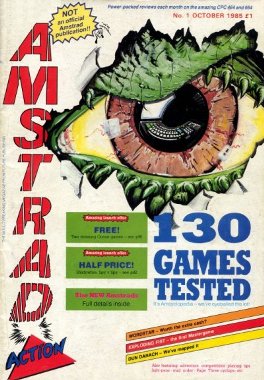
Amstrad Action was a monthly magazine, published in the United Kingdom, which catered to owners of home computers from the Amstrad CPC range and later the GX4000 console.
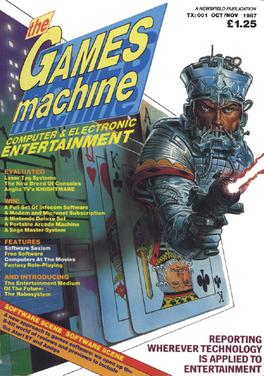
The Games Machine is a video game magazine that was published from 1987 until 1990 in the United Kingdom by Newsfield, which also published CRASH, Zzap!64, Amtix! and other magazines.

Crash is a magazine dedicated to the ZX Spectrum home computer, primarily focused on games. It was published from 1984 to 1991 by Newsfield Publications Ltd until their liquidation, and then until 1992 by Europress. It was relaunched as a quarterly A5 magazine in December 2020 with the backing of the original founders.
Thalamus Ltd was a British computer game developer that published titles for a number of 8-bit and 16-bit platforms during the late 1980s and early 1990s.
Newsfield Publications Ltd was a British magazine publisher during the 1980s and early 1990s.

Zzap!64 was a computer games magazine covering games on the Commodore International series of computers, especially the Commodore 64 (C64). It was published in the UK by Newsfield Publications Ltd and later by Europress Impact.
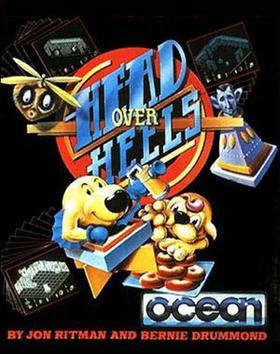
Head Over Heels is an action-adventure video game released by Ocean Software in 1987 for several 8-bit home computers. It uses an isometric engine that is similar to the Filmation technique first developed by Ultimate Play the Game.

The Lords of Midnight is an epic fantasy video game combining aspects of wargames and graphic adventures, written by Mike Singleton and originally released in 1984 for the ZX Spectrum. Very well received from the beginning, it was soon converted for the Amstrad CPC and Commodore 64. The game featured an innovative 3-D effect that Singleton called landscaping, which served to bring the player into the game much more than usual. The Lords of Midnight is often named with Elite as among the top role-playing games of the 1980s.

GamesMaster International, or GMI, was a roleplaying game magazine in the UK published by Newsfield Publications starting in July 1990. It was subtitled the Independent Fantasy Gaming Monthly. The magazine featured the same editorial team as G.M. The Independent Fantasy Roleplaying Magazine. The team approached Newsfield in 1990 to take over the publication after Croftward Publishing ceased trading. Newsfield added the word International to the title.

Amtix is a magazine that originally reviewed Amstrad computer software in the mid-1980s, published monthly by Newsfield Publications Ltd.
Europress was a British magazine and software publisher based in Adlington, near Macclesfield, Cheshire. Their magazine publishing business was previously known as Database Publications. The software division was renamed in 1999 to Actualize.
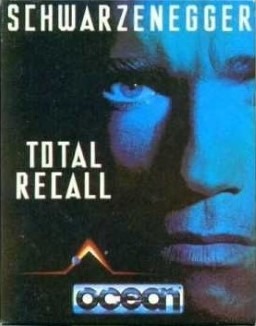
Total Recall is a 1990 platform game developed and published by Ocean Software that was released for the Commodore 64, Amiga, Amstrad CPC, ZX Spectrum, Atari ST, and Nintendo Entertainment System. Total Recall is based on the 1990 film of the same name.

Beach Head II: The Dictator Strikes Back is a 1985 video game for the Commodore 64, a sequel to Beach Head, developed and published by Access Software. It was designed by Bruce Carver and his brother, Roger, and was released for the Amstrad CPC, Apple II, Atari 8-bit family, Commodore 64, and ZX Spectrum.
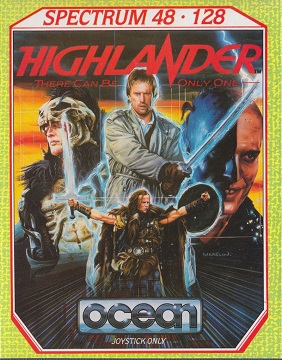
Highlander is a video game tie-in to the Highlander franchise released in 1986, the same year as the film, published by Ocean Software for the ZX Spectrum, Commodore 64 and Amstrad CPC home computers. Highlander was panned by reviewers.

Spore is an action puzzle game for the Commodore 64, Commodore 16, and ZX Spectrum, released by Mastertronic in 1987. Its title screen credits Jim Baguley with writing it, although Paul Rogers claims to have written it and its unreleased sequel, Mutant Zone. The music was composed by David Whittaker.

Blade Runner is a video game loosely inspired by the 1982 film Blade Runner, but is technically based on the film soundtrack by Vangelis as the publishers were unable to obtain a licence for a film tie-in. The game was published in 1985 by CRL Group PLC for Commodore 64, ZX Spectrum and Amstrad CPC. Reviews of the game were mostly negative.

Captain America in: The Doom Tube of Dr. Megalomann, also known as Captain America Defies The Doom Tube, is a video game based on a comic book series of the same name. It was published in 1987 by U.S. Gold on their Go! label for computers including the Amstrad CPC and the Commodore 64 and was published a year later on the ZX Spectrum. Reviews were mixed, with the graphics and audio generally seen as poor. It is the first video game to feature Captain America.

Barbarian II: The Dungeon of Drax is a video game first published in 1988 for various home computers. It was also released as Axe of Rage in North America. The game is the sequel to Barbarian: The Ultimate Warrior, which was published in 1987. In Barbarian II, the player controls a princess or barbarian character, exploring the game world to locate and defeat an evil wizard. The game's plot is an extension of its predecessor, although the gameplay is different. While the first game offers two players the opportunity for virtual head-to-head combat, the second is solely a single-player adventure with fewer fighting moves.

Friday the 13th: The Computer Game is the first game adaptation based on the films of the same name. It was released in 1986 by Domark for the Amstrad CPC, Commodore 64, and ZX Spectrum. The game was released on floppy diskette and cassette tape. The player's goal is to find and kill Jason, while making sure their friends or they themselves are not killed by Jason.

Mickey Mouse: The Computer Game, also known as just Mickey Mouse, is an action game developed and published by Gremlin Graphics in 1988 for the Amiga, Amstrad CPC, Atari ST, Commodore 64, and ZX Spectrum.
















